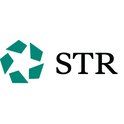Declines to slow, according to STR monthly forecast | STR Reports
As we at Smith Travel Research continue our monthly forecast updates, this month’s exclusive release to HotelNewsNow.com will highlight performance in the fall convention season of September through November and will provide insight into a slight revision in the 2010 forecast. The outlook still remains bleak for room rates in 2009, but there seems to be good news in certain sectors as we move into the third quarter.
To refresh the memory of readers, or perhaps inform some for the first time, the forecast is developed in conjunction with data partner e-forecasting.com using standard economic variables such as employment, personal disposable income, the consumer price index, gross domestic product and corporate revenues while also incorporating STR hotel data and proprietary economic indicators. Results produced by the model are reviewed by STR and a human element is added to the forecast.
Mark Lomanno
STR projects that at the end of 2009, supply will be up 3.0 percent, demand will be down 5.5 percent, occupancy will decline 8.4 percent, average daily rate will drop 9.7 percent, and revenue per available room will be down 17.1 percent.
“Our slight downward revision in the 2010 U.S. lodging RevPAR forecast is due to the higher supply growth number we now expect next year,” said Mark Lomanno, president of STR. “That upward adjustment is the result of the significant decline in the number of hotel rooms that are actually closing their doors in this economic cycle. Our previous assumptions for room closings were substantially higher than we now expect.”
The outlook for 2010 looks slightly better than 2009, but the industry still is expected to end 2010 with decreases in all three key metrics. Occupancy is projected to end 2010 with a 0.6-percent decrease, ADR is forecasted to end the year with a 3.4-percent decrease, and RevPAR is expected to end with a 4.0-percent decline.
With talk of improvement in the overall U.S. economy and a relative stabilization of transient leisure demand, there seems to be light at the end of the tunnel. A key indicator for recovery might be demand in group and transient business travel as we enter the conference season. Although it’s likely leisure demand will lead the hotel industry recovery, stronger-than-expected performance in group business would be a welcomed addition. However, with the stabilization of transient leisure demand, expect to see continued deep discounting in both segments throughout 2009 as hoteliers focus on rate to try to entice consumers.
RevPAR declines are expected to continue into the convention season, driven heavily by discounted rates. As we move into the third and fourth quarters of 2009, the industry will see a slower pace of decline in occupancy and demand percent change as performance in the later part of 2008 makes for a more favorable comparison. The only month with expected demand growth is November as hotelier’s recover from a loss of 8.0 percent in 2008.
